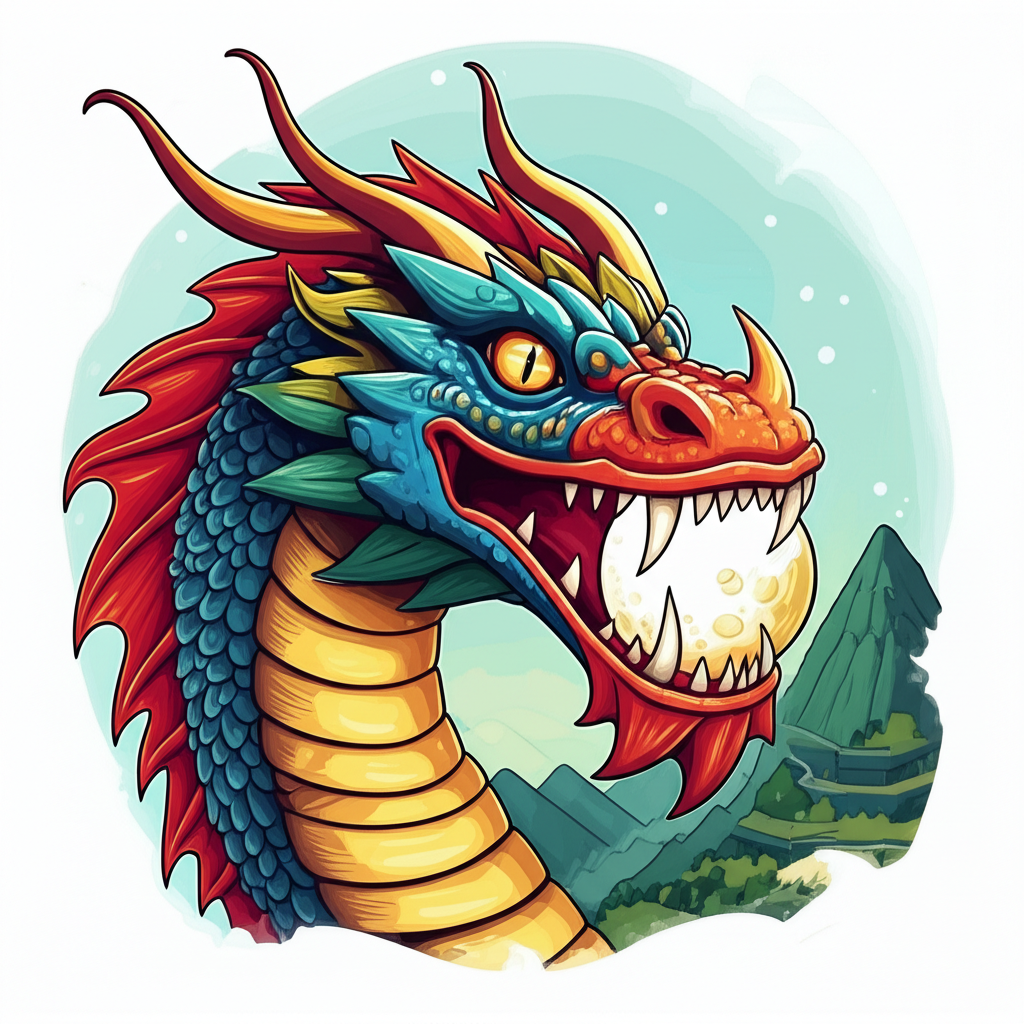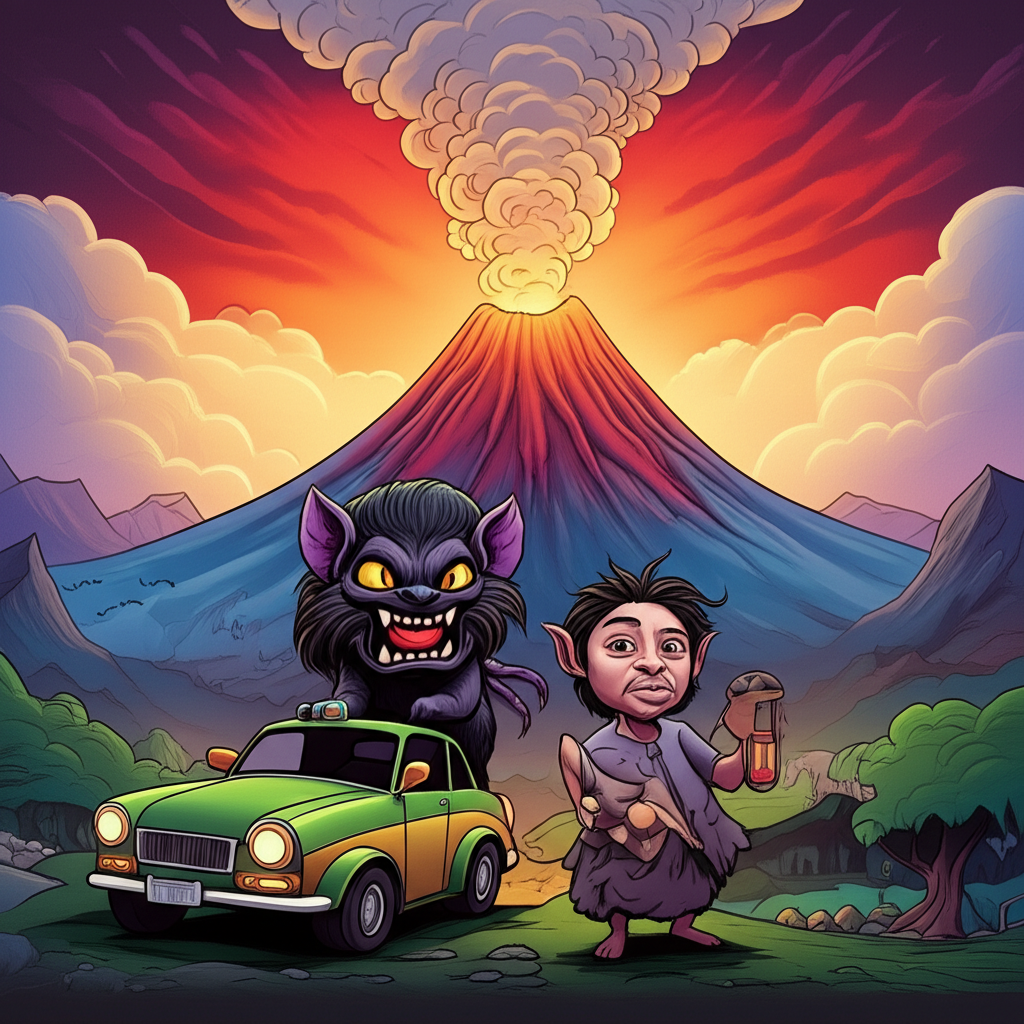
Introduction:
The story of the Bakunawa and the moon originates from the rich tapestry of Philippine mythology, specifically from the traditions of the Ifugao people of the Cordillera region in northern Luzon. This is a traditional story, passed down through generations, a vibrant thread woven into the fabric of their cultural heritage. It is a tale told around crackling fires in the longhouses, whispered amidst the rice terraces carved into the mountainsides, a testament to the human capacity for storytelling and the enduring power of imagination. We present this story not as a matter of faith, but as a window into the beliefs and worldview of a people who lived in harmony with the land, observing the celestial dance above, and finding explanations for the mysteries of the universe.
Origins and Cultural Background:
The Ifugao people, renowned for their intricate rice terraces that cascade down the mountains like emerald staircases, have a deep connection to the natural world. Their lives were intimately intertwined with the cycles of the sun, the moon, and the seasons. In the pre-colonial era, their society was organized around the agricultural calendar, with rituals and ceremonies marking important periods of planting, harvesting, and community life. Their world was populated by spirits, both benevolent and malevolent, who inhabited the natural elements – the mountains, the rivers, the forests. These spirits were believed to influence the well-being of the community, affecting the harvest, the health of the people, and the very fabric of their existence. The Ifugao, therefore, developed a complex system of beliefs and practices to maintain harmony with these unseen forces, seeking to understand and appease them. Their understanding of the world was animistic, meaning they attributed souls or spirits to everything, from the smallest pebble to the largest mountain. It was a world where the boundaries between the physical and spiritual realms were blurred, and where storytelling was a powerful tool for transmitting knowledge, preserving history, and explaining the inexplicable.
Character / Creature Description:
The Bakunawa is a colossal sea serpent, a serpentine dragon of immense size and power, a creature of the deep and the dark. It is often described as having a long, sinuous body, capable of coiling around the world. Its features vary slightly depending on the teller, but it is often depicted with a large mouth filled with razor-sharp teeth, powerful jaws, and a fearsome appetite. Some versions portray it with wings, allowing it to soar through the sky. The Bakunawa is not simply a monster; it embodies chaos and destruction. It represents the forces of the unknown, the unpredictability of nature, and the anxieties of a people reliant on the stability of the cosmos. Its symbolic attributes are multifaceted. It can represent eclipses, earthquakes, and other natural disasters, reflecting the fear of the unknown that gripped the ancient people. The Bakunawa’s insatiable hunger could be symbolic of the destructive forces that can plague the natural world, or the potential for chaos that exists within the universe. Understanding the Bakunawa is not about believing in its existence, but rather about appreciating the anxieties it embodies.
Main Story / Narrative Retelling:
The story begins long ago, when the world was new, and the moon, a radiant orb of silver, sailed majestically across the night sky. The moon, in its gentle glow, illuminated the rice terraces of the Ifugao, allowing them to work late into the night. It was a time of abundance, of plentiful harvests, and the people lived in relative peace and prosperity.
But in the depths of the sea, slumbered the Bakunawa. Awakened by a gnawing hunger, a primal craving for something more, it rose from its watery depths. Its gaze fell upon the moon, a celestial pearl hanging in the inky blackness. The Bakunawa, driven by its insatiable appetite, set its sights on devouring the moon.
The Bakunawa ascended from the sea, its massive form eclipsing the stars. It began its relentless pursuit. The moon, terrified by the monstrous creature’s approach, tried to flee, darting and weaving through the constellations. The Bakunawa, however, was relentless, its jaws snapping and its body snaking through the heavens.
As the Bakunawa drew closer, it finally caught the moon. It engulfed the moon in its gigantic mouth. The world was thrown into darkness. Panic and fear gripped the Ifugao. Their source of light was gone, their guide in the night was devoured.
The Ifugao, in their desperation, knew they had to act. They knew that if the Bakunawa consumed the moon completely, the world would be plunged into eternal darkness. They gathered in their villages, beating drums, banging gongs, and chanting prayers. They lit fires, creating a cacophony of sound and light, hoping to scare away the monstrous serpent.
Their efforts were not in vain. The noise and the light irritated the Bakunawa. The serpent, still struggling to digest the moon, was confused and angered by the commotion. Eventually, the Bakunawa, unable to stomach the constant clamor, regurgitated the moon.
The moon, battered but still shining, once again returned to the sky. The Ifugao rejoiced, celebrating their victory over the Bakunawa. From that day forward, the people understood the power of community, the importance of working together, and the significance of their rituals. They knew that when the Bakunawa returned, they had to be prepared.
Sometimes, the Bakunawa would try to swallow the moon again, giving rise to the phenomenon of lunar eclipses. During these times, the Ifugao would repeat their rituals, beating their drums and making noise, until the Bakunawa was driven away, and the moon once again shone brightly.
Symbolism and Meaning:
The story of the Bakunawa and the moon is rich with symbolism. The Bakunawa represents the forces of chaos, darkness, and destruction that threaten the order of the world. The moon symbolizes light, guidance, and the cycles of life. The act of the Bakunawa trying to devour the moon is a metaphor for the constant battle between order and chaos, light and darkness. The Ifugao’s response, their collective effort to scare away the Bakunawa, demonstrates the power of community, resilience, and the importance of ritual in maintaining balance and warding off evil. The story may also reflect observations of natural phenomena. Lunar eclipses, when the moon appears to be swallowed by darkness, would have been particularly terrifying to a people dependent on the moon’s light. The story served as an explanation for this event, providing a narrative framework for understanding and managing their fears. It is also a reminder of the fragility of existence, the need to protect the things that are valued, and the importance of remembering and honoring the stories that have come before.
Modern Perspective:
The myth of the Bakunawa and the moon continues to resonate in contemporary Philippine culture. It appears in literature, often explored in children’s books and fantasy novels. The Bakunawa has also found its way into video games and other forms of popular entertainment, solidifying its presence as a symbol of Filipino cultural identity. In cultural studies, the story is analyzed for its insights into the beliefs and values of the Ifugao people, offering a window into their worldview and their understanding of the cosmos. The narrative serves as a testament to the enduring power of storytelling and the ways in which myths can shape our understanding of the world around us.
Conclusion:
The tale of the Bakunawa and the moon, a captivating narrative from the Ifugao people, is a testament to the power of imagination and the human desire to understand the mysteries of the world. It is a cultural story, a vibrant piece of their heritage, that helps us understand the beliefs and anxieties of a people who lived in close harmony with nature. As Muslims, we acknowledge that Allah is the one true Creator and Sustainer of the universe, and we find comfort and strength in our faith. However, we can appreciate the rich tapestry of human storytelling, the beauty of cultural traditions, and the enduring power of the imagination. These myths, while not to be believed in as truth, offer us insight into the human experience and the endless capacity of the human mind to create, to wonder, and to weave stories that connect us to the past and to each other. They remind us of the enduring legacy of our ancestors and the importance of preserving and celebrating our cultural heritage. The story of the Bakunawa, like the rice terraces themselves, stands as a reminder of the ingenuity, resilience, and storytelling traditions of the Ifugao people.





